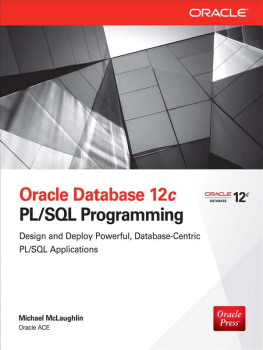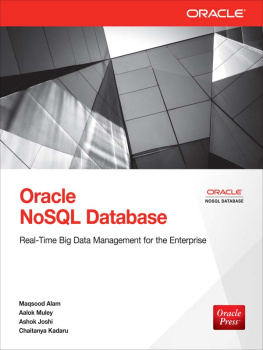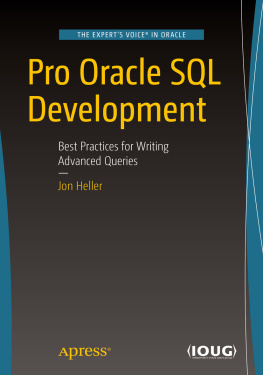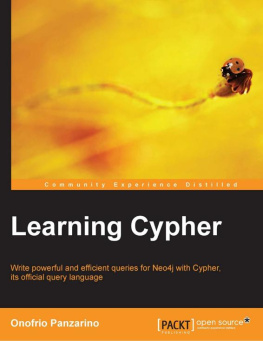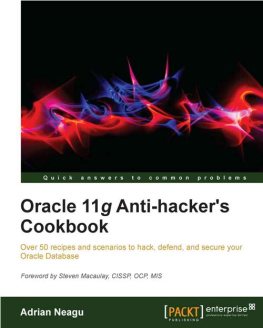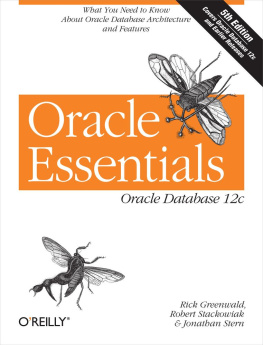Alex Reprintsev - Oracle SQL Revealed: Executing Business Logic in the Database Engine
Here you can read online Alex Reprintsev - Oracle SQL Revealed: Executing Business Logic in the Database Engine full text of the book (entire story) in english for free. Download pdf and epub, get meaning, cover and reviews about this ebook. year: 2018, publisher: Apress, genre: Computer. Description of the work, (preface) as well as reviews are available. Best literature library LitArk.com created for fans of good reading and offers a wide selection of genres:
Romance novel
Science fiction
Adventure
Detective
Science
History
Home and family
Prose
Art
Politics
Computer
Non-fiction
Religion
Business
Children
Humor
Choose a favorite category and find really read worthwhile books. Enjoy immersion in the world of imagination, feel the emotions of the characters or learn something new for yourself, make an fascinating discovery.
- Book:Oracle SQL Revealed: Executing Business Logic in the Database Engine
- Author:
- Publisher:Apress
- Genre:
- Year:2018
- Rating:5 / 5
- Favourites:Add to favourites
- Your mark:
Oracle SQL Revealed: Executing Business Logic in the Database Engine: summary, description and annotation
We offer to read an annotation, description, summary or preface (depends on what the author of the book "Oracle SQL Revealed: Executing Business Logic in the Database Engine" wrote himself). If you haven't found the necessary information about the book — write in the comments, we will try to find it.
Important features and aspects of SQL covered in this book include the model clause, row pattern matching, analytic and aggregate functions, and recursive subquery factoring, just to name a few. The focus is on implementing business logic in pure SQL, with a comparison of different approaches that can be used to write SELECT statements to return results that drive good decision making and competitive action in the marketplace.
This book covers features that are often not well known, and sometimes not implemented in competing products. Chapters on query transformation and logical execution order provide a grasp of the big picture in which the individual SQL features described in the other chapters are executed. Also included are a discussion on when to use the procedural capabilities from PL/SQL, and a series of examples showing different mixes of SQL features being applied in common types of queries that you are likely to encounter.
What You Will Learn
- Gain competitive advantage from Oracle SQL
- Know when to step up to PL/SQL versus staying in SQL
- Become familiar with query transformations and join mechanics
- Apply the model clause and analytic functions to business intelligence queries
- Make use of features that are specific to Oracle Database, such as row pattern matching
- Understand the pros and cons of different SQL approaches to solving common query tasks
- Traverse hierarchies using CONNECT BY and recursive subquery factoring
Database programmers with some Oracle Database experience. The book is also for SQL developers who are moving to the Oracle Database platform or want to learn unique features of its query engine. Both audiences will learn to apply the full power of Oracles own SQL dialect to commonly encountered types of business questions and query challenges.
Alex Reprintsev: author's other books
Who wrote Oracle SQL Revealed: Executing Business Logic in the Database Engine? Find out the surname, the name of the author of the book and a list of all author's works by series.

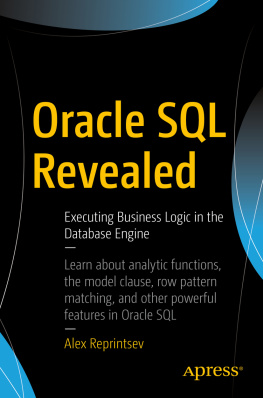
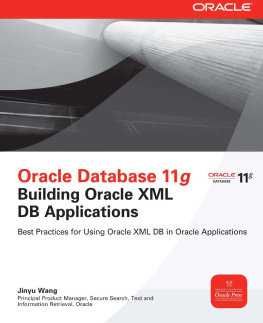
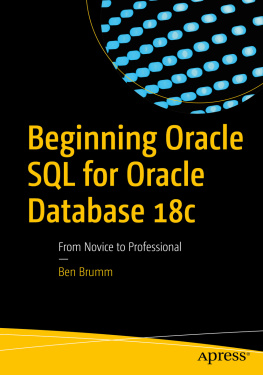
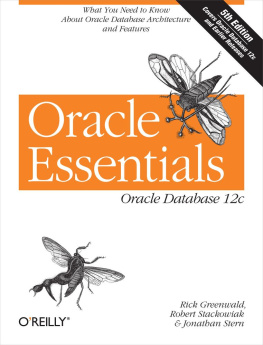
![Molinaro - SQL cookbook [query solutions and techniques for database developers ; covers SQL server, PostgreSQL, Oracle, MySQL, and DB2]](/uploads/posts/book/221182/thumbs/molinaro-sql-cookbook-query-solutions-and.jpg)
